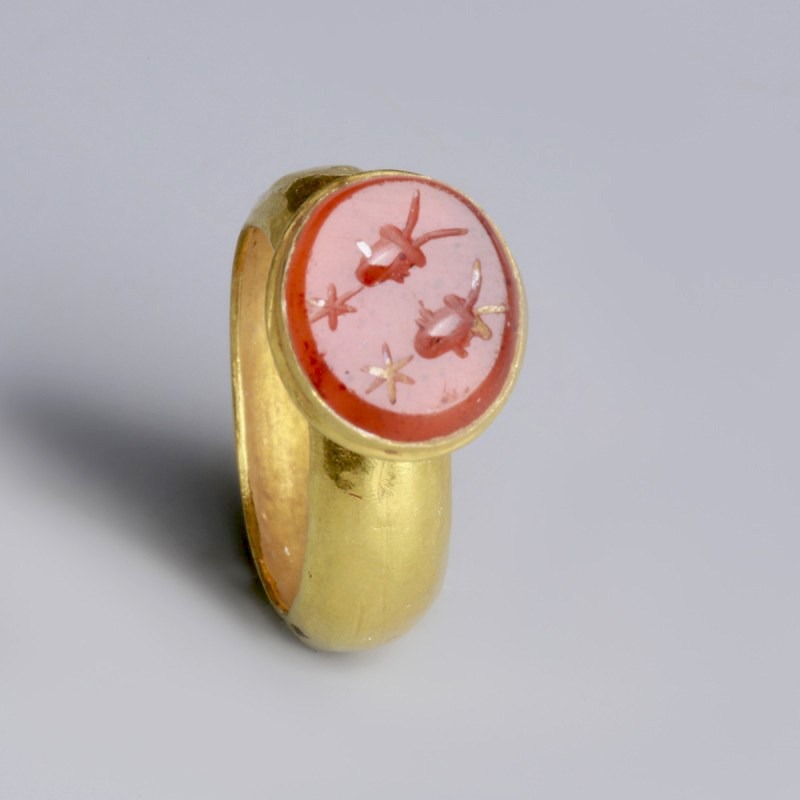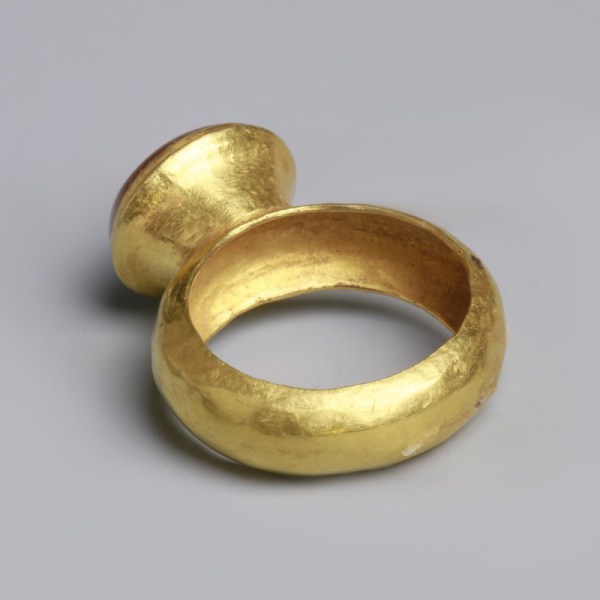The ancient Romans considered jewellery to be an essential accessory, for it provided a public display of their wealth. Roman jewellery at first followed trends set by the Etruscans, using gold and glass beads, but as the power and spread of the Roman Empire increased, so too did jewellery designs became increasingly elaborate. Different cultural styles from Greece, Egypt, North Africa, and the Orient were all incorporated to reflect Rome’s prosperity as a dominant, conquering city. The wide range of natural resources enabled artisans to create ostentatious jewellery using a diverse selection of materials: this increasingly included sapphires, diamonds, emeralds, garnet and amber from India, and pearls (which were particularly prized). Archaeological finds of Roman jewellery are relatively rare, considering the magnitude of Roman civilisation, and the historical and geographical span of the Empire.
The custom of wearing rings was popular amongst the Romans, and was probably introduced by the Sabines, who are described in early legends as wearing gold rings with precious stones. During the Roman Republic it became customary for all the senators, chief magistrates, and at last for the equites also, to wear gold rings. The large size of this ring suggests that it would have been worn by a male.
The Dioscuri, Castor and Pollux, were the offspring of the Spartan Queen, Leda, but they had different fathers. Castor was the son of the King of Sparta, and was thus a mortal. Pollux was the son of Zeus, and thus a demigod: however, both were apotheosised after their deaths. The Dioscuri were also gods of horsemanship and protectors of guests and travellers. Pollux was the first to be offered this honour, but he insisted that it be shared with his brother, Castor. Zeus agreed, but insisted that the brothers spent alternate days in the Underworld. On their death, the twins became the constellation known as the Gemini. The fact that this constellation is only visible for half the year may refer to the brothers’ division of time above and below the ground. Perhaps the stars on the ring reflect the twins’ status as a constellation or their apotheosis.

